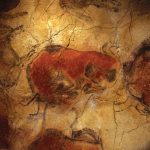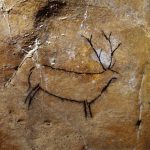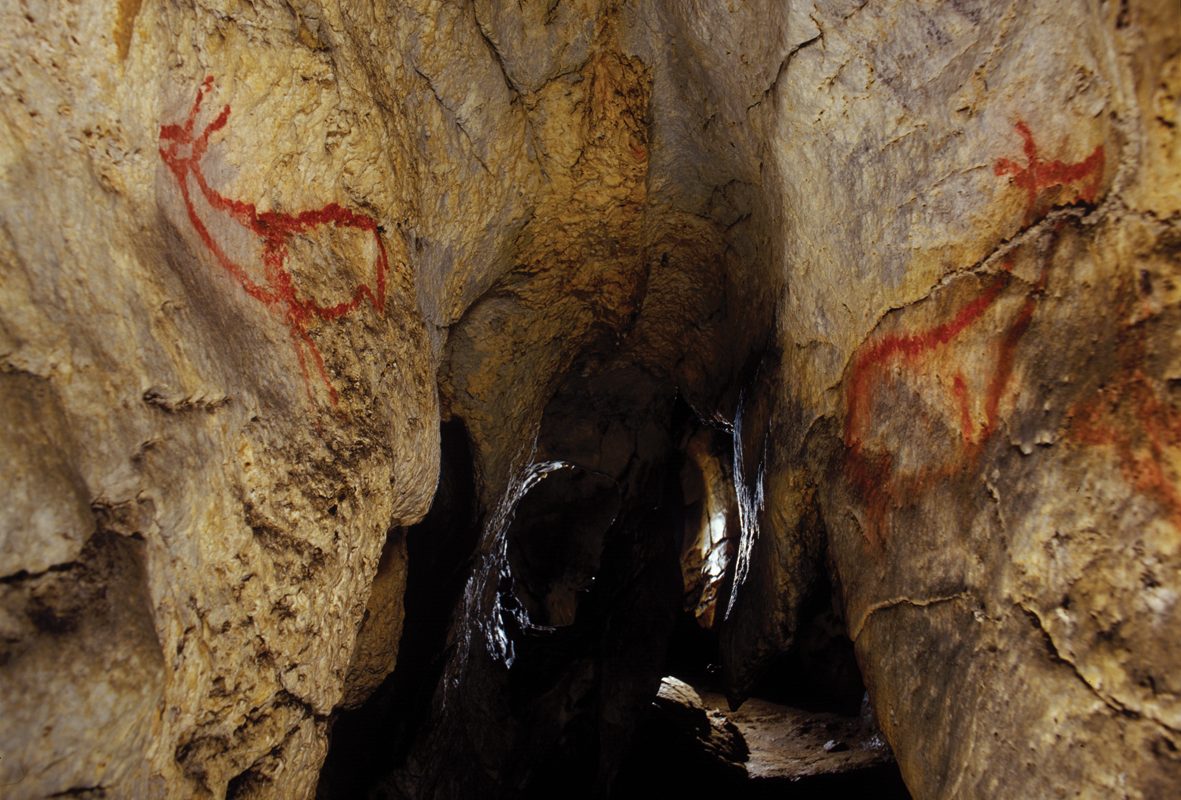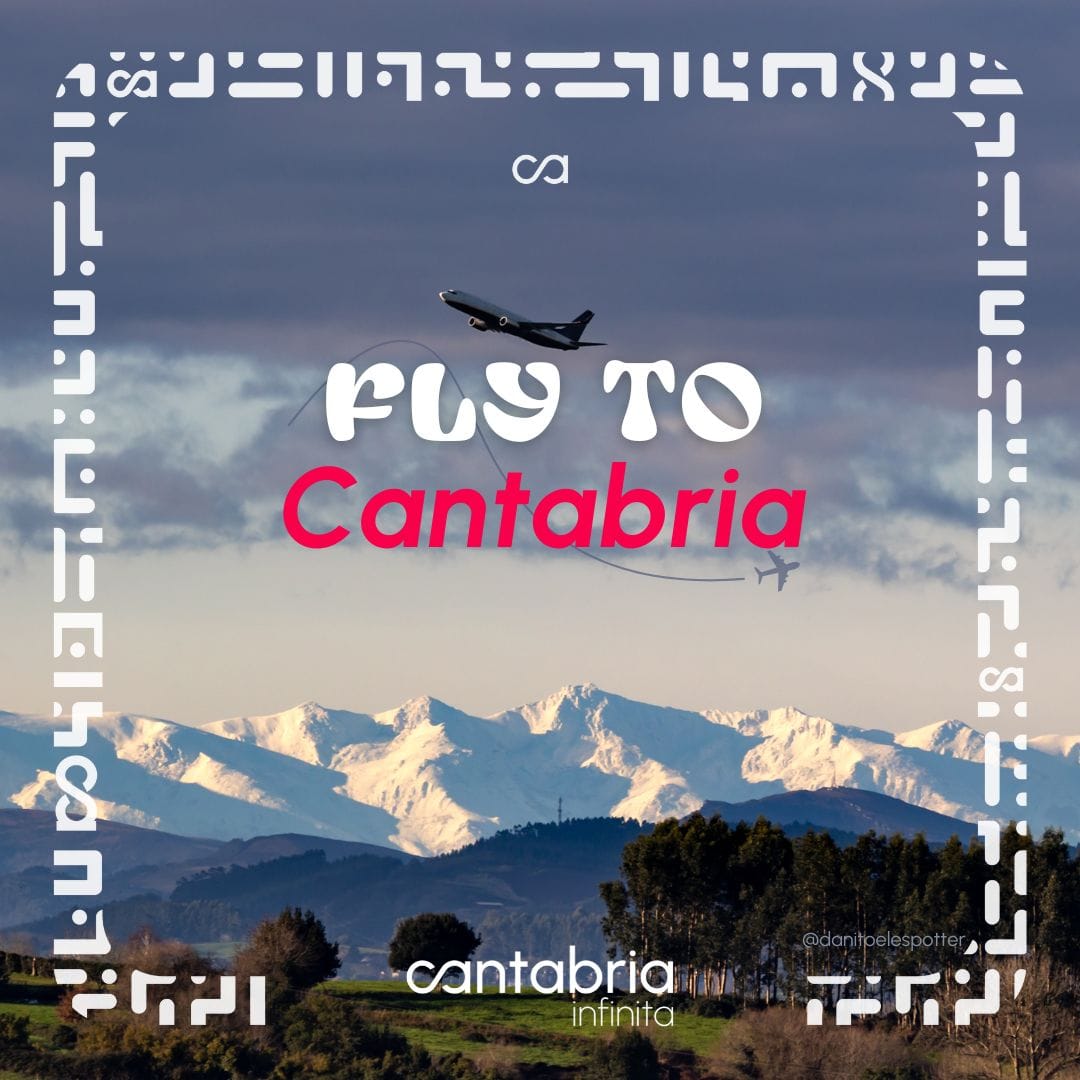Ten Reasons for Humanity
Today we present "Ten Reasons for Humanity"
Today in our enthusiasm to show you the wonders of our Cantabria Infinita we’ll be presenting the Ten Reasons for Humanity.
But what do we mean by this title, you may ask? Well, we are talking about one of the most important and well-known values of our region, that which is hidden in its interior, the highest density of caves with cave art in the world, more than 70 with paintings on their walls.
Of all these caves, 10, no less, have been declared, a World Heritage Site by UNESCO. A genuine pride, which makes Cantabria the region par excellence to visit rock art and the reason for the title of today’s post. Spearheaded by Altamira, considered the “Sistine Chapel” of cave art, these caves are the universal symbol of this valuable Palaeolithic heritage.
Many of these caves can be visited by tourists and this heritage of those first creative minds, are a perfect plan to enjoy, alone, with family, friends, as a couple or whenever you want. Are you feeling up to it visiting these caves with us?
As we have mentioned Altamira the hallmark, the best known worldwide of all these caves. But in addition to its famous bison we have 9 other caves which accompany Altamira in the declaration of a World Heritage Site by UNESCO which are: El Castillo, Las Monedas, Chimeneas, Hornos de la Peña, Covalanas, El Pendo, Chufín, La Garma and La Pasiega Caves. Shall we visit these together? All right then, let’s go.
Altamira,  is our first stop. Known as the “Sistine Chapel” of cave art, it is located in Santillana del Mar, one of the most beautiful villages in Cantabria, according to the association of the most beautiful villages in Spain. Altamira is one of the most important prehistoric cave paintings in Cantabria. Due to its conservation, the original cave can only be visited under very strict conditions. But so that everyone can learn about its history, a museum and an exact replica of the caves were built: the Altamira Neocave.
is our first stop. Known as the “Sistine Chapel” of cave art, it is located in Santillana del Mar, one of the most beautiful villages in Cantabria, according to the association of the most beautiful villages in Spain. Altamira is one of the most important prehistoric cave paintings in Cantabria. Due to its conservation, the original cave can only be visited under very strict conditions. But so that everyone can learn about its history, a museum and an exact replica of the caves were built: the Altamira Neocave.
From Altamira heading off towards Puente Viesgo, in the heart of the Pas Valley, specifically to Monte Castillo. This mountain contains in its interior four caves with prehistoric art: El Castillo, Las Monedas, Chimeneas and La Pasiega.
El Castillo Cave was excavated in the early twentieth century, writing the “first page” of prehistory in Spain and the “first chapter” in Europe. In the entrance, an important archaeological site is preserved which includes occupations from the Lower Palaeolithic (about 120,000 years) to the Copper Age (6,000 years), one of the most significant chrono-cultural records of Prehistory in the world. The cave paintings in the cave’s interior are made up of hands, bison, deer, horses and symbols of enigmatic meaning. This cave stands out for the great variety of techniques, themes and styles in its paintings.
We continue on to Monte Castillo and arrive at the Las Monedas Cave. Twelve (12,000) years ago, the last hunter-gatherers who populated the Cantabrian coast drew in a small room and with charcoal, the last cold climate animals which inhabited this region before their extinction. Its interior tour will surprise you due to the true geological treasure which the cave contains, consisting of spectacular limestone formations.
La Pasiega Cave, our next stop, is the cave with the largest number of representations of the entire Iberian Peninsula reaching a total of approximately 916, (an mind-blowing fact, don’t you think?). This cave was discovered by chance, this time during an excavation campaign in the El Castillo cave in 1911, but it is not currently open to visitors for reasons of conservation of its valuable interior heritage.
 Our last cave in Monte Castillo is the Las Chimeneas Cave, which was discovered in 1953 by a team that was building the access road to the El Castillo and La Pasiega caves. It has several panel of engravings in the area near the primitive entrance, with some animals and non-figurative motifs. Further inside there is a large panel and isolated figures. The group of black paintings is located at the back of a room, and in the small adjoining galleries, animals and quadrangular signs are represented. This cave cannot currently be visited due to conservation reasons.
Our last cave in Monte Castillo is the Las Chimeneas Cave, which was discovered in 1953 by a team that was building the access road to the El Castillo and La Pasiega caves. It has several panel of engravings in the area near the primitive entrance, with some animals and non-figurative motifs. Further inside there is a large panel and isolated figures. The group of black paintings is located at the back of a room, and in the small adjoining galleries, animals and quadrangular signs are represented. This cave cannot currently be visited due to conservation reasons.
After visiting the 4 Puente Viesgo caves we head to Ramales de la Victoria, to the Covalanas Cave. Its exceptional location, and its views from the entrance to the entire valley are an additional incentive to visit the cave known as the “cave of the red deer”. The represented deer, the aurochs and a horse are of great realism and beauty, as they are endowed with movement. They were made 25,000 years ago and represent the oldest manifestations of this pointillist art, which consists of applying the dye to the walls using the fingers or a pad. The visit takes place through a narrow corridor which allows the visitor to observe the paintings from a short distance away. The state of conservation of the paintings is exceptional, even the artist’s fingerprints can be seen.
El Pendo Cave is our next stop, where we will find paintings made using the same technique as in the Covalanas Cave. Located in Camargo, you reach the cave after a walk through a forest full of native tree specimens, another incentive for the visit. It is a cave of monumental proportions, with a very important archaeological site and spectacular cave paintings. Prehistorians such as Marcelino Sanz de Sautuola (discoverer of the Altamira paintings), excavated the cave, finding numerous bone and antler tools. But it was not until 1997 that the cave paintings were discovered, perfectly visible from the occupation site. Its location is intentional and for this reason, please note that we are talking about 25,000 years ago, an approximately six metre high scaffolding had to be constructed. Of these paintings, its red deer of great scenic expressiveness and a horse, located in the middle of the composition, stand out.
We continue our tour and head to the Hornos de la Peña Cave, in San Felices de Buelna, known for its cave engravings. Its entrance was a dwelling place for the last groups of Neanderthals that populated the northern peninsula and the first Homo Sapiens that inhabited Cantabria. This cave can currently be visited, but in very small groups, given the limited capacity of the interior space.
The last cave which can be visited of those declared a World Heritage Site is the Chufín Cave. Located in Riclones, the Moro Chufín’s Cave owes its name to this character who, according to local people, hid a treasure in its interior. Although its true treasure are the red paintings which decorate its high ceiling and the exterior engravings, located in the entrance (something rare in the rock art of the northern peninsular).
We finish our tour with one of the jewels of the crown, the La Garma Cave located in the village of Omoño. This cave is still under archaeological research and excavation, so it is not open to the general public. What is known so far is that there are a large number of artistic expressions, both paintings and engravings, as well as three sites with remains from different periods. The value of what has been found so far is such that Stuart Weitzman, who has been for 40 years one of the leading luxury footwear manufacturers, has become a patron of this site, and among other things has made, the recording of a video produced using the latest technologies so that the world can learn about the wonders hidden in this difficult access three-story cave.

Do you feel like visiting our hidden heritage? A perfect plan which you can cap off by tasting the best regional cuisine. If you feel up to visiting any of the caves which allow access, do not forget to book in advance by calling 942 59 84 25, or on the website cuevas.culturadecantabria.com.
What do you think about this route through our hidden heritage? Which ones would you like to visit? Tell us your experience or what you expect to find on your next visit, in our social networks on Facebook and “X”.
Come and enjoy our UNESCO World Heritage Sites in Cantabria, + x to discover.






